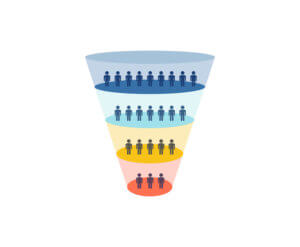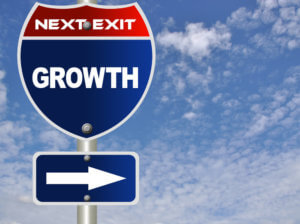
A spray and pray approach will not cut it in today’s market, but most business owners and leaders approach market potential as a random series of moves that may or may not pay off. A key step is to ensure alignment of your business purpose, your aspirational goals and growth strategy with the potential in your market. In other words, does the overall market size and the opportunity that exists exceed your business growth aspirations?
If you can answer this with a resounding yes, then happy days. Crack on with your business growth plans as your market is in abundance and no doubt you’re set up to capture it.
If, on the other hand, you’re like most business owners and leaders who can confidently assert a market exists for their products and services, but when pushed on the details of the size of the opportunity or indeed its limits, then details start to get a bit flaky.
When looking at market size and opportunity it’s important to quantify how many customers are willing to pay for your products or services. A baseline estimate is better than no estimate at all. Without knowing your market size you may be conducting business in a market so small, it’s next to impossible to make any money. You need to be operating in a market that will deliver sustained and profitable business growth.
13 questions to help you define the market size and opportunity
Think of the following questions as a funnel; you start at the top with a big wide market and as you answer each question you define your market more and more until you get laser beam focus on your niche, your target customer within your chosen market.
Market Size Funnel

Q1. What is the current size of the market?
Q2. Is it growing or contracting? Why and by how much?
Q3. Factoring in Q2, what is the potential size of the market?
Q4. What data sources do you use to validate this?
Q5. How reputable, trustworthy, credible are these sources?
Q6. What is your target segment(s) within this market?
Q7. Who is your buyer – what are their demographic characteristics?
Q8. Why do they buy – what are their psychographic characteristics?
Q9. Factoring in Q6 – Q8, what is the potential size of your chosen target segment?
Q10. What % can you realistically convert? Or put another way, what % will buy from a competitor, won’t buy at all, or simply won’t buy from you?
Q11. What is your USP (unique selling point) which distinguishes you from your competitors and validates your conversion rate?
Q12. What is the profitability of your target customer who will convert?
Q13. Do your aspirational goals align to your market size, opportunity and niche (target customer)?
Are you set up to capture the opportunity?
Defining your market size will identify the overall market, the total revenue opportunity for your product or service, and the potential market. The portion for which you can realistically compete, helping you identify your sweet spots.
But are you set up to capture the opportunity and maximise these sweet spots?

To do this you should assess your business against 10 key business growth enablers (one of them is market potential!) to understand the true growth potential in your business. Or more importantly, what you should be focusing on to maximise your growth potential!
Not sure how to assess your business, or what you should be focusing on?
Don’t worry.
Check out The Business Growth Pathway™, a digital platform that delivers a clear blueprint for scalable growth.
10 business growth enablers to choose from.
10 reports personalised to your business growth.
One free trial.
Assess your business today.


